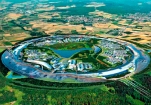Earth City – the Compact Eco-city

In a period of global economic crisis, the recovery necessarily needs a new conception of the city, its production and Energy processes, its social life. Earth City – Eco city system is an innovative instrument for public authorities, governments and private investors willing to pursue a strongly articulated strategy of urban sustainable planning based on acquired data and achievable in a short time.
Earth City with a population of 30,000 inhabitants - is a system establishing a balance with natural environment since it respects the local climate and the geographic and cultural characteristics alike. It has rigorous size limits offering an optimal ratio between the built-up areas and the public spaces that are defined by the structure of mixeduse urban blocks.
It consists of a limited number of strictly correlated blocks, but can be adapted to wider and higher complexity contexts.
The optimal density of built-up areas enhances a rich network of relationships of proximity so that residents live in a totally pedestrian area where the electrical car sharing is encouraged and supported by efficient networks of public transports for longer distances.
The Earth City sustainability policies mainly aim at creating an urban environment with minimal consumption of natural resources, preserving the local biodiversity thanks to its ‘green heart’ that covers 40% of the whole area and ensures productive and water reserves.
Moreover, the integration of natural elements into a ‘nervous system’ of intelligent technological networks with minimal consumption of resources, maximizes the Earth City sustainability since it exploits energy in an efficient and effective manner according to the principle of ‘just – in – time’ use, that is energy use when and where is needed.
The system exploits renewable energy and recycling technologies to satisfy 60% - 100% of Energy demand, depending on the technologies implemented and on the environmental and climatic characteristics of the site, with a CO2 reduction of over 90,000 tons/year.
Green forests and farmlands complete the self-sufficiency and selfproduction of the city.
Woods alone produce 830 tons of oxygen that are equivalent to 27 kilos of oxygen per each of the 30,000 residents.
The 42 hectares of food crops satisfy 30% of the food demand of the residents.
Full version you can download here
 Materials provided by JM Schivo & Associati
Materials provided by JM Schivo & Associati


